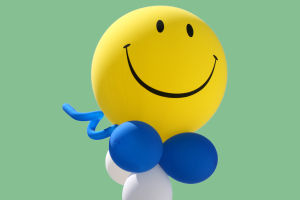Light’s True Colors
Hey Lykkers! Ever stared at a rainbow and thought, “Wow, how does nature pull this off?” Well, you're not alone—and the answer is actually a perfect mix of science and beauty.
Today, we’re diving into something colorful, familiar, and pretty fascinating: the colors of the spectrum. Whether you’re a science lover or just curious, let’s break it down in a way that actually makes sense—like chatting over coffee with a friend.
What Is the Spectrum?
So, when we say “spectrum,” we’re usually talking about visible light—the part of sunlight that our eyes can detect. Light may look white to us, but it’s really made up of multiple colors.
When that light passes through a medium like a prism or water droplets in the air, it bends (a process called refraction) and splits into a beautiful range of colors. This range of visible colors is called the visible spectrum. It’s a natural light show that we can thank physics for.
The 7 Colors of the Spectrum
Here’s the famous lineup of spectrum colors in order of wavelength, from longest to shortest. You might’ve heard of them through the acronym ROYGBIV:
1. Red – Longest wavelength, low energy. Often associated with heat and danger, but in the spectrum, it’s the first to show up.
2. Orange – Slightly shorter wavelength. It blends the energy of red with the brightness of yellow.
3. Yellow – Right in the middle of the warm tones. It’s vibrant, noticeable, and common in warning signs because our eyes detect it easily.
4. Green – Located near the center of the spectrum. It’s the color we see most in nature and represents balance and calmness.
5. Blue – Shorter wavelength, higher energy. Often linked to coolness, clarity, and depth—think ocean and sky.
6. Indigo – A deep blue-violet shade. It’s often debated in science circles because it’s tricky to distinguish with the human eye.
7. Violet – Shortest wavelength, highest energy in the visible spectrum. It borders ultraviolet, which we can’t see but some animals (like bees) can.
Why Do We See These Colors?
When white light passes through something like a prism or water droplets in the air, it slows down and bends. Each color bends at a slightly different angle because of its wavelength. That’s why the light separates into bands, revealing the full spectrum. This process—refraction and dispersion—is exactly what creates a rainbow.
The Science Behind the Beauty
The visible spectrum is only a small part of the electromagnetic spectrum, which includes other waves like infrared, ultraviolet, X-rays, and more. But our eyes are only designed to detect this narrow range of light—from about 400 to 700 nanometers in wavelength. What’s cool is that different animals see different parts of the spectrum. For example, bees can detect ultraviolet light, which is totally invisible to us.
Final Thought
So next time you see a rainbow or even a simple glint of light on a CD, remember—you’re actually witnessing physics in action. The spectrum isn’t just pretty; it’s proof of how complex and amazing light really is. Nature, with a side of science? Yes, please.
Got any science-y questions on your mind? Drop them, and let’s explore the world one curious topic at a time.
Contact to : xyjph123@gmail.com
Privacy Agreement
Copyright © boyuanhulian 2020 - 2022. All Right Reserved.
Privacy Agreement
Copyright © boyuanhulian 2020 - 2022. All Right Reserved.


